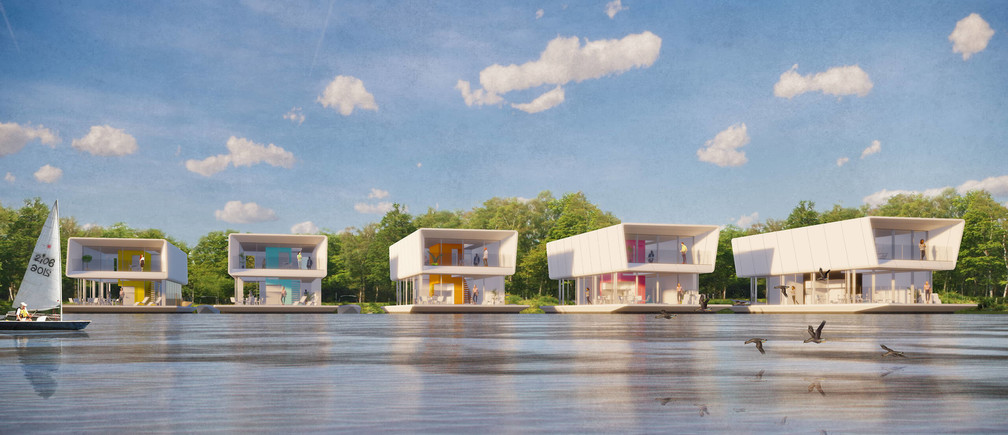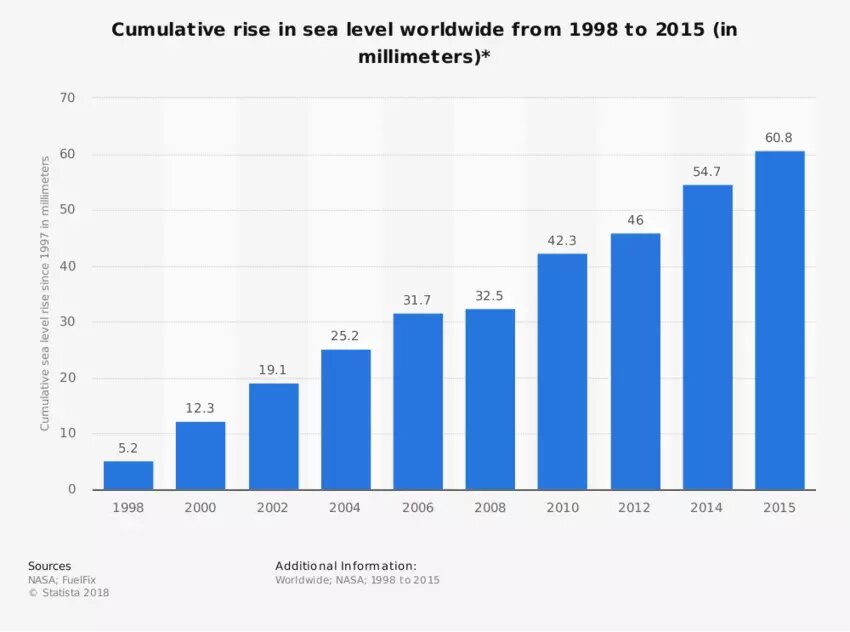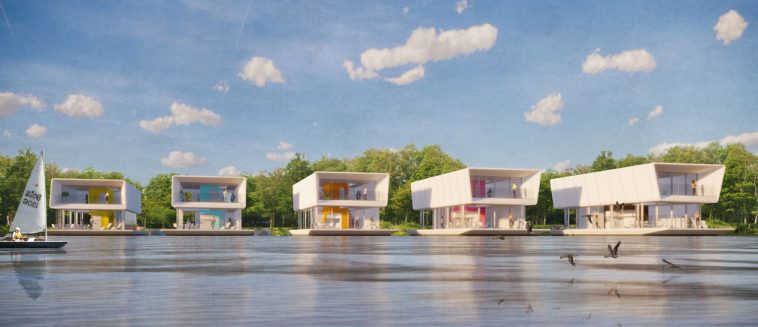Climate change is one of the major problems in the today scenario that is impacting millions of people across the world. There will be a time when we need to adapt depending on the consequences of climate change and global warming. This is planned as an urgent action against the changing climate and the rising sea level.

There are a group of architects across the world designed floating homes to protect people living in areas prone to flooding and rising sea levels. The project is a collaboration between British architect firm Grimshaw and Dutch manufacturer Concrete Valley which is currently at the initial phase and would be completed with the help of the dwellings will be constructed using a concrete and glass framework.
The protective lower deck will be a part of your the living space. In the case of event of a tidal surge or flooding, the pontoon rises with the water level to keep the home safe.
The home will be fitted with solar panels and even heat exchangers so that the water dwellings will be able to generate their own electricity and withstand mains power outages, in the case of storm. The components of the home is modular, enabling an assembly and flexible enough to create several different designs.
Output can be scaled up while keeping costs down, which could make the affordable flood-proof housing units available on a vast scale, the architects say. Waterside factory production would enable the completed homes to be transported by boat to their mooring site. Apart from this major collaboration, there are firms whoa tying for the floating homes. In the UK, Baca Architects has partnered with manufacturer Floating Homes. Their design was originally an entry to a competition to reduce London’s housing shortage and has since been turned into a prototype.
FLoating homes can be one of the best feature in parts of Asia and other developing regions, It will emerging as a ways to relieve overcrowding in busy cities and urban areas prone to flooding.With land values at a premium in some places, water-based dwellings could offer a more affordable alternative. The ocean is already reclaiming land in some parts of the world, as rising seas increase the risk of flooding.

Talking about climate change and global warming, areas of the Arctic are melting very fast. According to the NASA analysis, Alaskan glaciers disappeared at an annual rate of 46 gigatons between 2003 and 2010, contributing to rising sea levels. Teh global population will reach 9.8 billion people by mid-century and hence humans will experience extreme flooding could further strain limited land, water, food and other resources. According to the research of National Oceanography Centre (NOC), the forecast would be to keep the global temperature within 2℃ of pre-industrial levels could leave the world facing annual costs of around $14 trillion.
A recent study published in Nature Communications predicts that around 200 million people could be living below the high-tide line by the end of this century. Over the next 30 years, rising seas could bring chronic flooding to the homes of more than 300 million people.
These challenges are at the heart of the Virtual Ocean Dialogues, an initiative by the World Economic Forum and Friends of Ocean Action. The online event provides a forum for more than 50 world leaders to address the most pressing challenges facing our oceans and develop ways to protect, maintain, and keep them healthy and resilient. While innovations such as floating houses could help tackle rising water levels, urgent action is needed to address the underlying causes of climate change before a tipping point is reached which could threaten the survival of all species living in, on or beside the water.
Source: weforum.org




